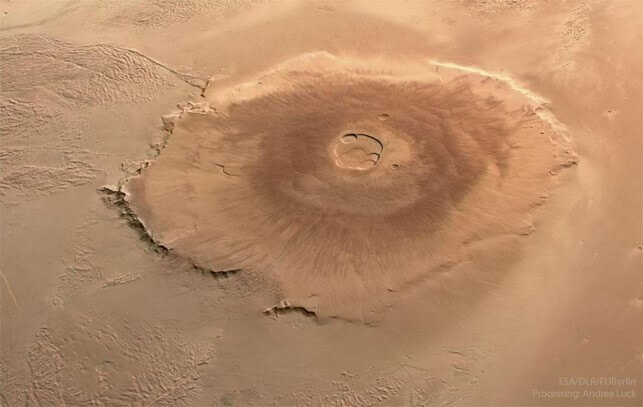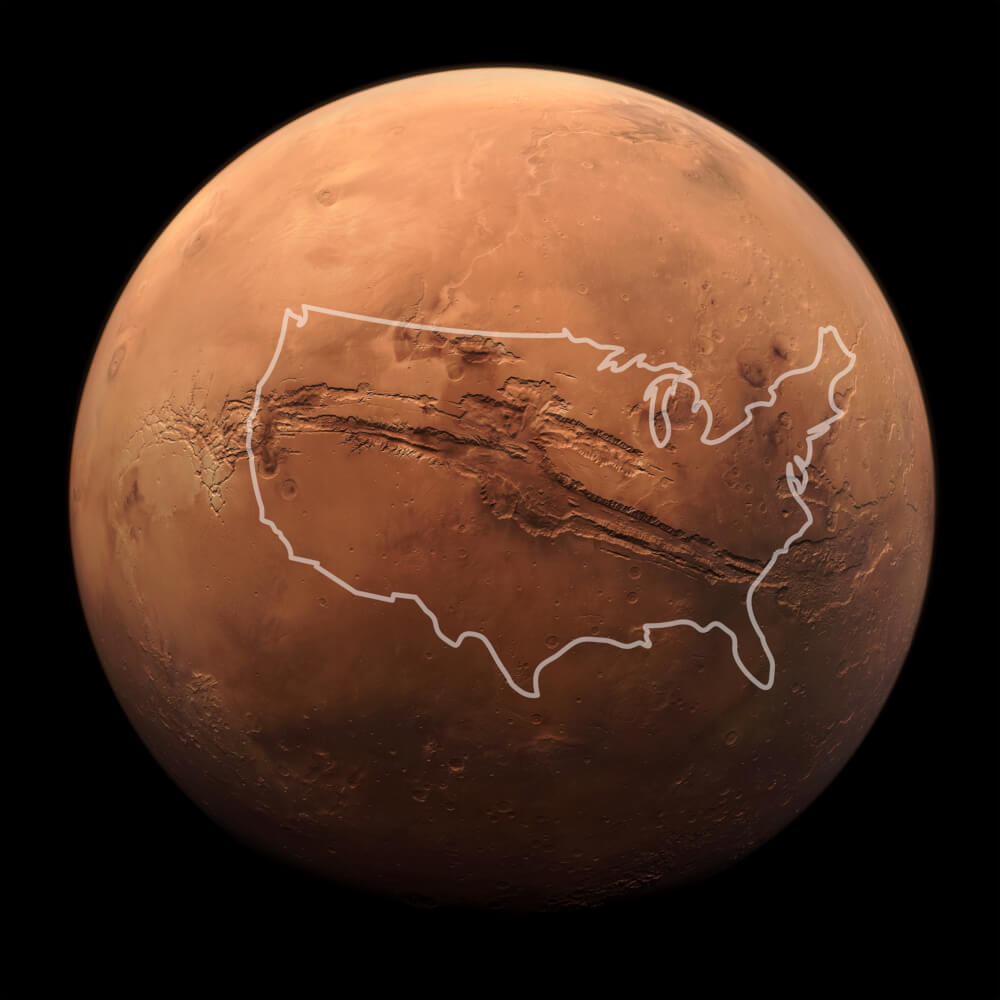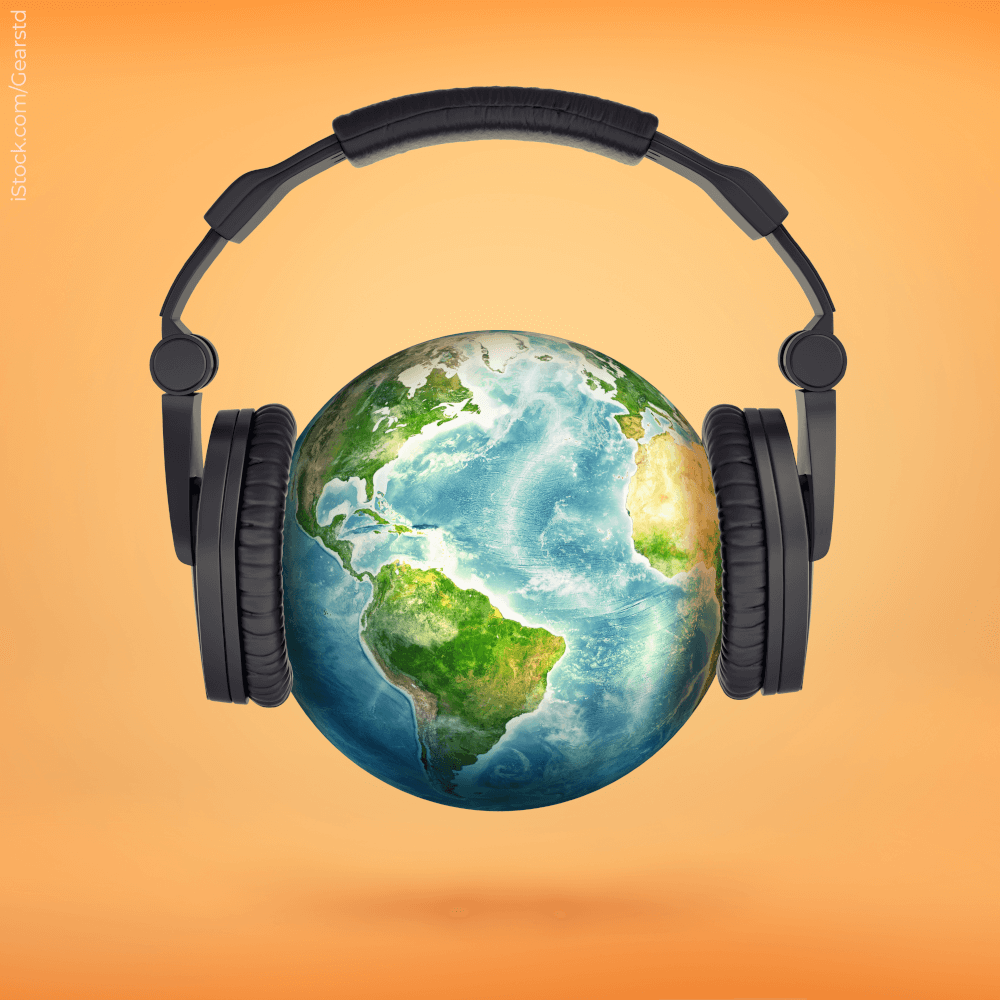Mars
Picture credits


Mars is the most Earth-like planet in the Solar System, although it has only one-ninth of Earth’s mass. On Mars, a day is only a few minutes longer than on Earth. Due to its tilted axis of rotation, it has distinct seasons, but they last longer than on Earth because Mars takes twice as long to orbit the Sun.
Mars has no magnetic field to protect it from particle radiation, which makes the radiation on its surface about 100 times stronger than on Earth. It’s also colder: surface temperatures vary from 35 degrees Celsius during the day to -110 degrees Celsius at night, again due to its greater distance from the sun.
Despite the very thin Martian atmosphere of CO2, a number of fascinating Earth-like phenomena have been observed, such as ground fog made of carbon dioxide or gravity waves, a type of cloud that forms when wind blows over mountain ranges or crater rims.

The “red planet” actually has many colours. On the surface we see brown, gold and light brown. The cause of the reddish surface is the oxidation – i.e. rusting – of iron in the rocks, in the regolith (the “Martian soil”) and in the Martian dust. Whirled-up dust makes the planet appear mostly red from a distance.

NASA’s Mars rover Curiosity has taken pictures of rocks with a rippled structure that were formed billions of years ago by waves on a shallow lake. Other signs of flowing water in the past are channels that the water dug into the ground.
Today’s Mars has a thin atmosphere that does not allow liquid water; it would evaporate immediately. But we know for sure that there is ice at the poles – and possibly icy patches elsewhere on the planet. The question is whether the ice melts slowly enough in summer that it can provide microbes with water for a long time.

On Mars there’s a large canyon system called Valles Marineris, which is as long as the U.S. is wide. This is equivalent to the distance from Berlin to Kabul in Afghanistan – more than 4800 kilometres. The canyon is up to 320 kilometres wide and 7 kilometres deep. That’s about 10 times bigger than the Grand Canyon on Earth!

No other planet besides Earth has been explored as intensively as Mars. To date (June 2023), 50 space missions have attempted to reach Mars. Currently, there are five still-functioning spacecraft on Mars and another eight in orbit. Future missions will focus on searching for past life and returning samples from Mars to Earth. NASA also has long-term plans for crewed missions.

Audio guide
(available soon)
PhD students from the Institute of Physics at the University of Rostock give exciting insights into their research and explain the universe.
Quiz
The atmosphere on Mars is very thin. The pressure at the top of Mount Everest is still many times higher than the pressure on the surface of Mars, about…
